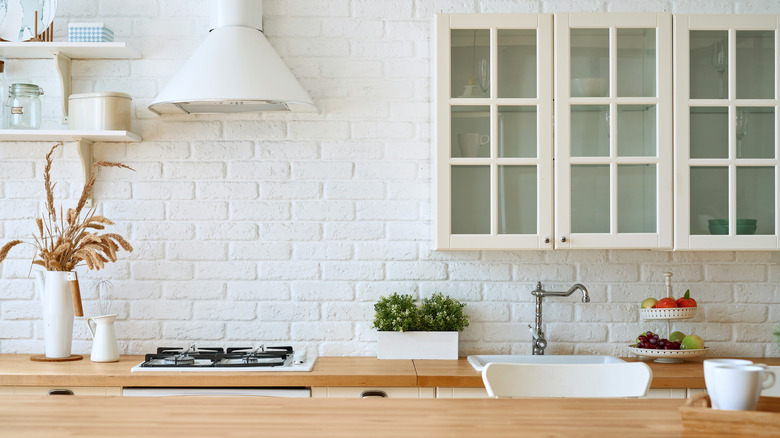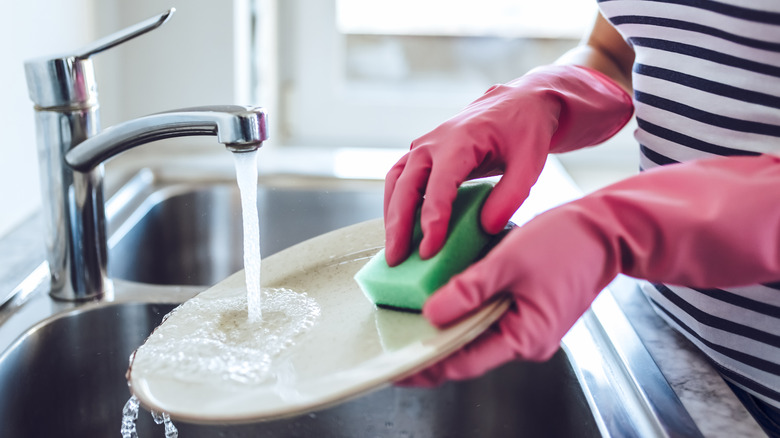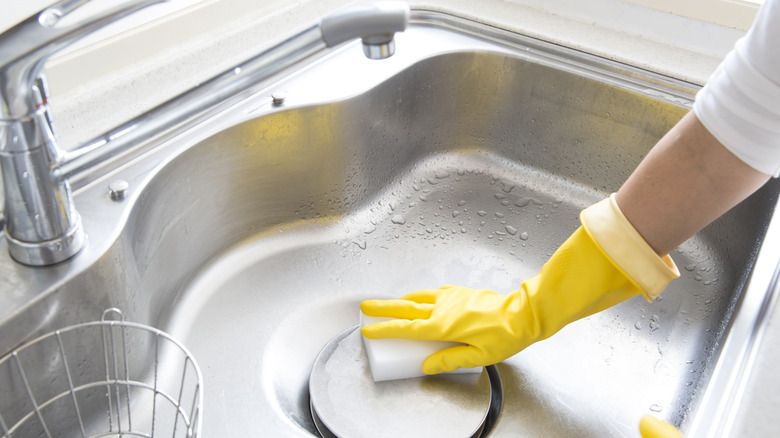The Germiest Places In Your Kitchen Might Surprise You
When we stop to consider the germ hotspots around the house, most of us assume the worst offender is the bathroom. And, given what goes on in the average bathroom, you wouldn't be wrong to think that.
But what about the kitchen? Yes, the beloved space where we whip up our Sunday breakfasts, midnight bowls of ramen, and everything in between. The heart of the home. The spot where friends and family gather. As cringe-inducing as it is to consider, the kitchen actually contains two of the germiest spots in the average household.
Thanks to frequent offenders like raw meat, unwashed produce, and less-than-sanitary cleaning utensils, your kitchen surfaces are the perfect breeding ground for dangerous bacteria like E. coli and salmonella. These bacteria are lurking in places that you might expect, like the handles of the refrigerator, but some of their other hiding spots will surprise you. Keep reading to find out what the germiest places are in your kitchen.
The top two offenders
The sponge you keep next to your sink should be safe, right? After all, you use it to clean your dishes or wipe down the counter after dinner. Wrong! It turns out that the trusty sponge might just be the germiest item in your kitchen. And the sink where it rests? It's most likely the dirtiest surface in the whole room.
According to a 2011 study by NSF International that examined germs in the home, the two highest concentrations of microorganisms were found in the kitchen sponge or dishrag and the kitchen sink. Bacteria need just a few things to grow like crazy: moisture, lack of light, and warmth. Your constantly damp sponge has all of that in spades. In an interview with Today, microbiologist Dr. Charles Gerba likened the sponge to "bacterial heaven" because it's the perfect vessel for absorbing coliform bacteria.
He also explained why the kitchen sink is such a hotbed for germs, even with water being rinsed over its surface constantly. "Think about it, everything is slopped into it," he said. "You cut raw meat then rinse off the cutting board in the sink. There's more fecal bacteria in a sink than there is in a flushed toilet! That's why dogs drink out of the toilet. They know better than to drink out of the kitchen sink."
With that being said, you may want to reconsider letting your dishes soak and move them straight to the dishwasher instead.
How to keep everything clean
Knowing that your kitchen is germier than your bathroom is a pretty squeamish thought, but there are several cleaning tips to ensure the germs are kept to a minimum. To disinfect your sponge, Health suggests placing it in the dishwasher or zapping it in the microwave for one minute (just make sure to dampen it beforehand). Plan to replace your sponge every few weeks, and opt for a polyurethane foam sponge instead of a cellulose one. A study in the journal Food Protection Trends found that polyurethane foam contained significantly less E. coli bacteria than cellulose after a month of use.
Once your sponge is clean and you turn to sanitize the sink, know that it's a task you may need to do a few times each day. The Spruce suggests disinfecting the sink after every meal prep, especially if you used raw meat. Use disposable disinfectant wipes, and make sure to thoroughly wipe down the faucet, handles, and any other nearby surface where bacteria may have collected.
While there's no way to avoid a germy kitchen completely, a fresh sponge and pack of disinfectant wipes will go a long way in your battle against bacteria.


